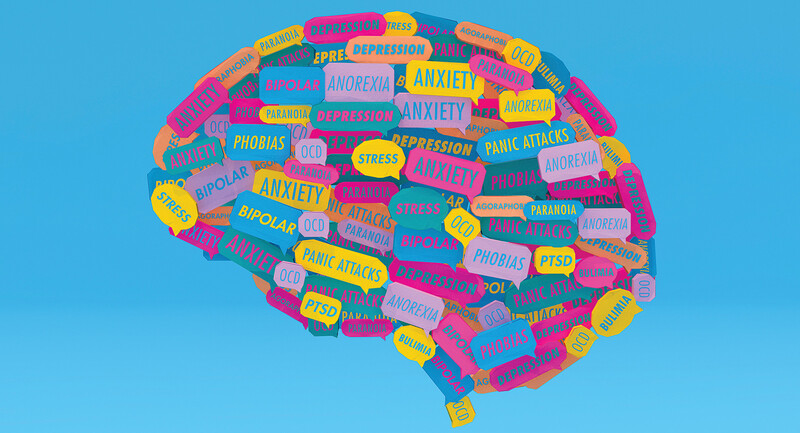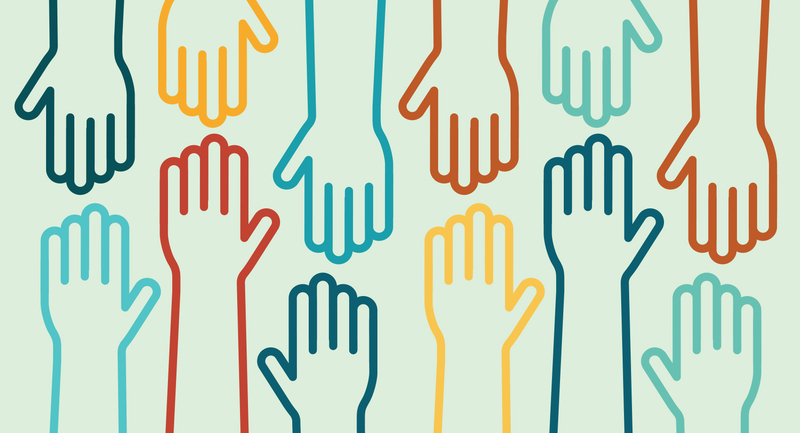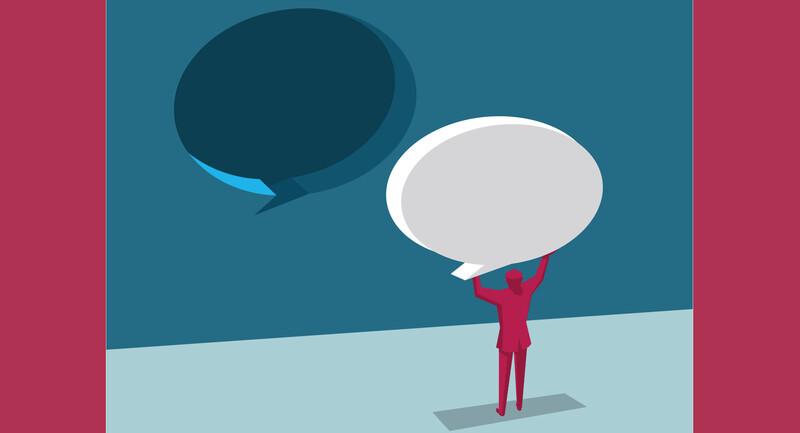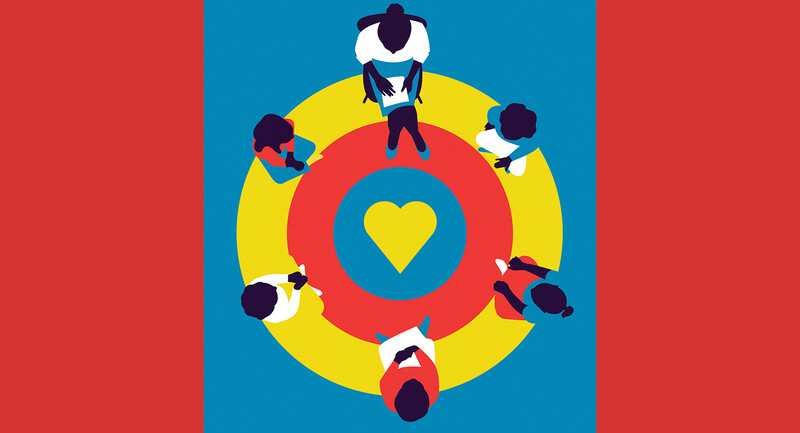CHALLENGE: Student mental health needs are on the rise.
Sarah sits nervously in her 9th grade class. She was diagnosed with an anxiety disorder in 3rd grade. Sarah has done a good job of learning how to manage her anxiety by taking breaks when she needs them and creating focus points in her environment to help her stay calm. No one in Sarah's class knows what she has to do to be there every day. She feels like her friends often dismiss her overwhelming anxiety by saying they know what it's like because they get nervous before a test. Her teacher sometimes gets frustrated with her need for breaks and asks her to just calm down. Sarah is doing everything she can to maintain her mental health amidst all these factors. She is getting good grades and is in theater, but she is constantly exhausted by her anxiety.
It's April of junior year, and Nate is overwhelmed in multiple ways. Everyone keeps emphasizing how hard and important junior year is. His workload increased this year. He feels endless pressure to get into college. He's playing basketball and football while volunteering on the weekends and maintaining a high GPA. He's watching the college acceptance letters of the seniors in the school pour in and feels like everyone else has it figured out. Nate hasn't been able to keep everything together. He's worried that something much more serious is happening. He's read that this could be depression, but he isn't sure. He can't stop thinking about what is wrong and what it means if he has depression. Nate doesn't have time to ask anyone about it, so he quietly tries to push through and make sense of what he is experiencing.
We don't have a common language for mental health in schools, and that makes things hard for every member of a school community. Students and teachers alike are struggling with their mental health and aren't sure how to talk about it. Creating a common language that helps everyone communicate can make a huge difference in addressing the decades-long youth mental health crisis and getting the right kind of help to the people who genuinely need it. Since the pandemic, there's been an even more concerted effort in schools to address mental health. But we're truly just at the beginning of finding solutions. To make real headway, school communities need to start from scratch, building language and awareness.
As the former director of outreach for the National Mental Health Awareness Campaign (NMHAC) from 2002–2010, as well as a teacher and mental health advocate, I've seen firsthand how the mental health crisis is affecting our young people. The rate of suicide for those ages 10 to 24 increased nearly 60 percent between 2007 and 2018 (Curtin, 2020). In an unprecedented move, the American Academy of Pediatrics, American Academy of Child and Adolescent Psychiatry, and Children's Hospital Association joined together in October 2021 to declare a national emergency in child and adolescent mental health (AAP, 2021). Students are experiencing high rates of anxiety disorders, clinical depression, and suicidal thoughts. They spend a significant amount of time worrying about how to navigate these challenges. Beyond the headlines and national advisories is a generation of young people who are tired of hearing statistics. They want to know what they can do about the mental health issues that affect them and their friends. They want to learn skills that can help them manage their emotions and what they can do when their friends are in crisis. In short, they want to learn how to talk about mental health.
Beyond the headlines and national advisories is a generation of young people who are tired of hearing statistics.
In seeing this need in students, as part of my work with the NMHAC, I developed the first large-scale model of mental health assemblies for schools and launched the country's first mental health speakers bureau. Prior to 2002, full school assemblies for mental health did not exist. I had the opportunity to work with some of the top mental health professionals in the country between 2002–2006 to figure out how to train young mental health advocates to safely deliver assemblies for students of all ages. In 2013, I developed a mental health curriculum for students from 6th grade through college, so that schools everywhere can teach mental health the same way students learn about physical health. When schools teach about physical health, they focus on facts about development and how a person can take care of their body. We can use a similar method to teach students about brain development and how to take care of their minds. I truly believe that addressing mental health in schools honestly and authentically will help students develop skills to effectively identify what is happening to them and what they can do to take care of themselves and others. A public health approach to teaching about mental health utilizes lessons about the way the brain develops and how that affects emotions; mental health definitions and vocabulary that gives kids the language to discuss the mental health challenges they experience; how to develop effective coping mechanisms; and ways to support friends who are struggling. Incorporating mental health education into schools, adopting mental health literacy, and empowering educators to normalize conversations about mental health can help students in critical ways.
A Common Definition
The term "mental health literacy" was first introduced in 1997 as "the knowledge and beliefs about mental health disorders which aid their recognition, management, or prevention" (Jorm et al., 1997). Early research on mental health literacy has shown that when young people have a language for mental health issues, they can identify what they are experiencing and seek help (Amado-Rodríguez et al., 2022). Mental health literacy allows students to identify the differences between typical emotions and what could be a more serious concern. It helps students vocalize what they need as well as seek help sooner.
One crucial part of a mental health literacy curriculum should be for students to learn basic information on how the brain works. Helping students understand how the brain functions can help them learn more about how the limbic system or cortexes affect their behaviors. Our brains grow significantly between the ages of 12–25, and this time is also when a lot of people experience their first encounters with loss, change, and rejection, all while forming their identities and internal voices. It can be helpful to teach students about why they may feel impulsive or have overwhelming emotions they can't easily deal with, how technology and social media activate parts of the brain that make them more reactive, and what steps they can take to activate their cortexes to bring more calmness into their lives.
In addition to creating space to learn about how the brain functions, a mental health literacy curriculum provides a clear definition for mental health. When people hear the words mental health, they tend to think of very different things. Some think of people with severe mental health disorders. Some think of spa retreats with massages. The World Health Organization defines mental health as "a state of well-being that enables a person to cope with the stresses of life, realize their abilities, learn and work well, and contribute to their community" (2022). In short, mental health is how you build skills to address challenges in your life and what you do to maintain those skills. We develop mental health by focusing on communication skills, relationships, family history, coping mechanisms, and other strategies to make our minds more balanced. We need to have this clear definition to have a common language for what mental health means.
The Ways We Cope
Mental health literacy helps us understand how and when to seek help—and how to know what type of help would be most effective. This is similar to how we cope with physical health challenges. For example, we can understand the difference between a sprained ankle and a broken leg, or having a cold or the flu. If someone has a cold, it might be difficult for them to operate at their best, but they may decide it's not that bad and just push through the sickness without seeking any care. If the cold gets more severe, they might take medication, rest, or go to a doctor. A really severe cold could mean that even with treatment, they may need stronger medication or a hospital visit.
Similarly, if a person has stress that is difficult to balance, they may not sleep as much as they should or they may feel overwhelmed. They might decide they can push through this stress without seeking any help. If the stress gets more severe, they may use a positive coping mechanism like exercise, talking to a friend, or listening to music. If the stress gets more consistent or is ongoing, they may need further support, such as an outpatient mental health program. Or, if they find they cannot address the situation, they may need to take a break from what is causing the stress.
A Spectrum of Severity
Mental health challenges, like physical health challenges, lie on a spectrum. There are everyday challenges like stress, lack of sleep, or body image issues, and significant events such as loss of a loved one, suicidal thoughts, or rejection, that can impact a person differently. Even the everyday challenges can—like a seasonal cold—turn more severe if not dealt with, and a person raised in an environment with trauma, abuse, neglect, or other severe issues is at higher risk for developing more severe mental health disorders.
There is a tendency in our society to label typical uncomfortable emotions with words that equate to serious mental health disorders.
There is a tendency in our society to label typical uncomfortable emotions with words that equate to serious mental health disorders. Teenagers should feel nervous, sad, bored, angry, frustrated, and other typical emotions. But it has become pervasive to say these emotions are depression or anxiety. When we tell students who are nervous that they have anxiety, we are dismissing the deeper experiences of people with a mental health disorder. Students and adults are also confusing sadness with clinical depression or body image issues with eating disorders. They mislabel being orderly or clean with obsessive compulsive disorder. These misunderstandings cause harm for everyone.
A good mental health literacy curriculum provides clear spectrums of a range of mental health issues, and can create a common language in schools. This clarity can help those navigating mental health disorders not have their experiences downplayed or compared to everyday emotions. It can also help people with typical emotions not conflate what is happening to them with a mental health disorder.
What This Looks Like in Schools
Implementing mental health literacy in a school needs to reach all levels. The curriculum should start with professional development for faculty and staff. The training should provide an understanding of brain development, a clear definition for mental health, how to develop positive coping skills, and the spectrums between typical emotions and mental health disorders. The school should also let parents know that developing language about mental health is a priority.
After these steps are taken, schools can choose how they want to implement mental health literacy. They could choose one grade to focus on these aspects. The curriculum could be implemented in an existing health or physical education class. Or these lessons can be reinforced in a multidisciplinary approach, with discussions of brain development in science or examples of historical figures with mental health disorders in history or English class.
Students I've taught share that after these lessons, they feel they can communicate about their emotions clearly in social situations, help roommates and friends understand what they are experiencing, seek help for effective coping mechanisms when they are struggling, and better understand brain development. They can treat their mental health similarly to how they treat their physical health. This is the type of education all students could have before they finish high school.
A Better Way for Mental Health
Let's return to the students who started this story and think about how their lives would be different with mental health education. Sarah would receive the support she needs, as her educators and students would know the differences between their everyday nervous emotions and what she is experiencing with an anxiety disorder. Nate would have a language to ask for help and understand that what he is experiencing is really hard and that is OK. I know this to be the case because I see it in my school every day. The power to change mental health currently exists in every school. We just need to take the steps to make it happen.
Reflect & Discuss
➛ How does your school teach students about mental health? Where could you do better?
➛ How would a common vocabulary around mental health challenges help your students and staff?
➛ Do you feel comfortable sharing stories about your mental health with students? Why or why not?
How Can Teachers Talk About Their Mental Health Experiences?
One of the most effective ways to lessen stigma about mental health disorders is contact with a person who has experienced them (Corrigan, 2005). Research shows that talking to someone with a mental health disorder helps normalize mental health concepts and builds the connection that everyday people can have mental health disorders. When a teacher shares their experiences with mental health challenges with students, it can be an amazing teaching tool that normalizes mental health conversations in the classroom.
However, educators must do this responsibly. Through my work as director of outreach for the National Mental Health Awareness Campaign, I worked with a team of leading mental health experts to develop specific guidelines educators can use to safely and responsibly share personal stories about mental health with students.
Only share things that you have processed. If you have a story that you have processed, then it can be a strong example of mental health. But if you have not yet processed emotions from an experience, then do not share it in a classroom. You need time and space to share emotions with people close to you. Processing emotions with students in a classroom can create a difficult dynamic where students feel they need to take care of an educator.
Ensure the story has a learning objective. Personal stories should not be shared to make an educator seem cool or to shock students. But a story can be used to humanize an existing lesson. For example, if an educator is teaching about substance use, they can share if there is a biological predisposition in their own families and how that impacted their experiences with substances. Or, when discussing how younger people have a higher chance of addiction and substance misuse, an educator could talk about someone they knew who started using substances at a young age.
Make your story relatable. Students really like hearing personal stories that are relevant to a topic. This is different from going into a discussion with a learning objective, because you are sharing a story that students can understand based on their own experiences. For example, when talking about stress, an educator can share how stress impacts them and how they cope with it. Doing this in a way that is relatable versus sharing in a way that makes the educator the expert can help students see that stress impacts everyone and people have varying levels of success in managing it.
These three tips can help make any lesson that is being taught in a K–12 setting come alive in new ways and normalize mental health.
—Ross Szabo









